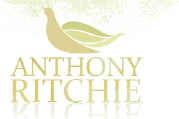

Viola Concerto
for viola and orchestra, Anthony Ritchie Opus 64
A personal work in 4 movements covering a range of moods. Lightly scored to let the viola speak.
- YEAR: 1994-5
- DURATION: 25 minutes
- COMMISSIONED BY: Dunedin Sinfonia, for soloist Donald Maurice
- INSTRUMENTATION: Viola solo, 2222/1210/2 perc, strings
- LEVEL: 4 | Challenging for professional musicians
Listen to Robert Ashworth and the Auckland Philharmina Orchestra play Viola concerto No 1 recorded by RadioNZ
Link to CD recording: soloist Timothy Deighton with the Penn State Orchestra on Viola Aotearoa Atoll ACD 202
Programme Note
The Viola Concerto was written while Ritchie was Composer-in-Residence with the Dunedin Sinfonia in 1994, and first performed in Dunedin the following year, with Donald Maurice as the soloist. It is a personal work in which the viola takes on various characters, and describes human relationships. The solo part speaks in a natural and uncontrived voice, and consequently there are few shows of virtuosity in the concerto.
The first movement, allegro tempestuoso, opens in turmoil and includes an idea inspired by one of Bach's Brandenburg concertos. A lighter, folk-like theme emerges and acts as a link to the second main theme which is cooler in mood and tinged with sadness. In the middle section a new idea is played on muted brass interspersed with a lyrical melody on viola. Themes are developed in the orchestra, reaching a climax and leading back to the home key of E. At this point melodic ideas are transformed by a downward, 'weeping' motif which appeared earlier on. This carthartic passage fades and the movement ends quickly, without resolution.
The long theme at the start of the slow movement began life as a solo piece, and unfolds slowly on the dorian mode accompanied by simple string chords. The stronger second theme on G has a determined quality about it. A lyrical third theme appears on the woodwinds and uses elements of the opening melody. Ominous rumbles in the bass signify the start of the middle section. A boisterous climax evaporates into the recapitulation, where the opening melody is varied with soft floating flutes and string harmonics. The third movement, a cadenza, follows and acts as a link to the finale.
Dance-like in character, the finale provides a resolution to the tensions of the previous movements. Some of the themes are influenced by popular music styles, and near the end there is a slightly slower section which recalls Bluegrass music; this was inspired by the American group, the Blue Sky Mountain Boys. There are three main themes in the movement, and these are combined in counterpoint towards the end. A long pedal note E appears in the Coda, over which the soloist plays a mock-heroic version of the second theme. This is brusquely swept aside by strident and jazzy chords, and the concerto comes to a conclusion.
For those without an orchestra to hand in the mean time, it is also available with piano reduction (contact the composer). An adaptation for piano and viola, The Viola Sonata Opus 64b, is for those who are never expecting an orchestra.
Buy the right to download a single pdf containing the orchestral score, and permission to duplicate or print it as required for one orchestra : NZ$25.00.
Buy the right to download a single pdf containing all orchestral parts and the viola solo part, and permission to duplicate or print it as required for one orchestra : NZ$75.00.
|
Orders are saved in a secure Paypal shopping cart which is viewed on a separate browser tab. When you have finished shopping, simply Check Out for a Secure Guest check out using your credit card, or to use an existing Paypal account choose Paypal Check Out. Orders are processed every 5 minutes. An email with a link to each file should arrive within 6 minutes of checking out. If it does not arrive we will likely notice during a New Zealand working day but please send an email to bellbirdpublications at gmail dot com if you have any problems with ordering. |
